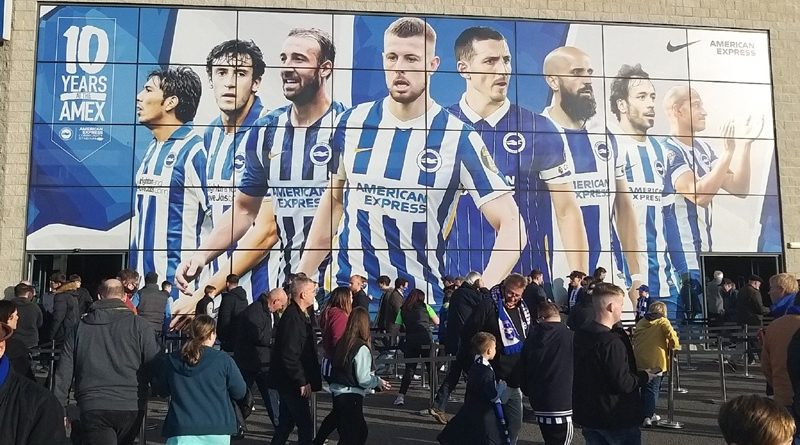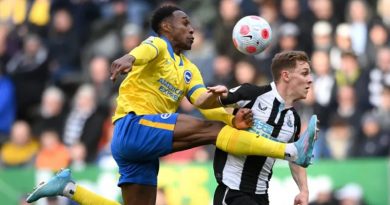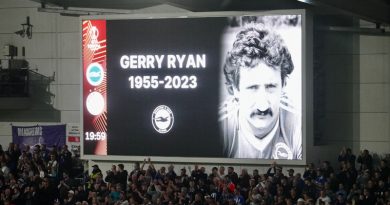Get your kit on: Why owning an Albion shirt matters
When kit release day finally rolls around, this year I am not going to do it. I will only wear it around 20 times, and half of that I’ll have a coat over it.
I really can’t afford it this year. I’m a man in late middle-age who should not be wearing a replica shirt. I won’t find myself making the five minute drive to the Albion Superstore at the Amex on a sunny August afternoon this year after holding out for several weeks. Definitely not.
Few things generate as much passionate difference of opinion and loyalty as the shirt players wear and which we, in our thousands, fork out good money for each year.
Changes almost imperceptible to the casual onlooker are hotly debated by fans: the width or absence of a stripe, the position of a badge, the cut of the collar.
It has to be new yet the same, different enough to make the fans buy it, but instantly recognisable as an Albion, Arsenal or Wolves shirt.
That said, our break from the norm in 2020-21 from stripes to an all-blue pinstripe throwback to the 1980s was widely praised.
The replica kit business is worth some £280 million in the UK alone. Shirts retailing at around £55 cost less than £5 to make, and manufacturers like Nike and Adidas generate around £13 profit per shirt, according to The Mirror.
There have long been arguments over where and how these kits – and other items like footballs – are made, by whom and for how much.
We should be wearing things to support our club that people have been paid a decent wage to make in safe conditions. Too many stories appear detailing examples of this not being the case.
In the 1970s you would have been hard-pressed to find a classic blue and white striped Bukta shirt for sale or being worn outside of Sussex.
Now our Nike stripes are raised aloft in Paraguay, worn proudly in cities across the US, bought by fans in Mumbai and worn to barbecues down under. Brighton are global, and that means more sales for Nike.
It’s not just the home kit either. Away ones can be equally prized, perhaps none more so than the hyper turq kit of the season just past.
It looked great even before Brighton enjoyed their best ever away season as a top flight club wearing it. Now it will also forever be associated with famous late goals at Spurs, Chelsea, Southampton, Palace and Brentford.
The black polo shirt with yellow shoulder stripe from 2016-17 promotion season is a favourite of mine, the one Sebastian Pocognoli was wearing when he caused “bedlam behind that goal” away at Queens Park Rangers.
And once you get into the Albion Superstore, it is not just home and away kits that provide temptation. Brighton have training wear for every weather, activity and day of the week.
The warm-up top. The water-resistant jacket. The walk-out jacket. Maybe a classic baseball cap in honour of Russell Slade. And what about adult shorts and socks? Who actually buys those?
A set of conditions laid out by the Premier League governs the size of sponsors and other criteria shirts have to follow.
Manufactures must meet those at the same time as considering a wide range of factors when it comes to design.
Football shirts have to look good for fans who wear them with jeans even when they aren’t going to a game.
There are practical considerations for both fans and players. Shirt numbers need to be visible, otherwise Deniz Undav might be confused with Neal Maupay who might be confused with Florin Andone from the back of the East Upper.
Players need to be able to see each other too. A shirt too florescent and a pitch side steward might receive a pass having been mistaken for a left back beating the offside trap down the wing. And if Sir Alex Ferguson is manager, don’t whatever you do suggest having a grey kit.
A football shirt of course is far more than all of those things combined. It holds memories too, which is why in time old kits join others in the wardrobe.
There, they provide a tangible reminder of that goal, that away trip, that season, that post-game drinking session, that memory of our team you’ll never let go of.
That Errea kit the Albion won the 2010-11 League One title in. The Skint sponsored shirt that marked the return to Brighton after two years at Gillingham.
The all-blue design that instantly takes you back to the ecstasy and agony of Wembley in 1983. The Sandtex one you wore at Hereford or the shirt from that demo for Falmer.
Maybe you even have a Nike one signed by all of the players who helped Brighton win promotion to the Premier League in 2016-17.
Whatever your favourite, a football shirt is a symbol of belonging. Of football family. Or support for your team and so much more.
Here’s my credit card. No I don’t need a bag thanks.
Warren Morgan @WarrenBHAFC




